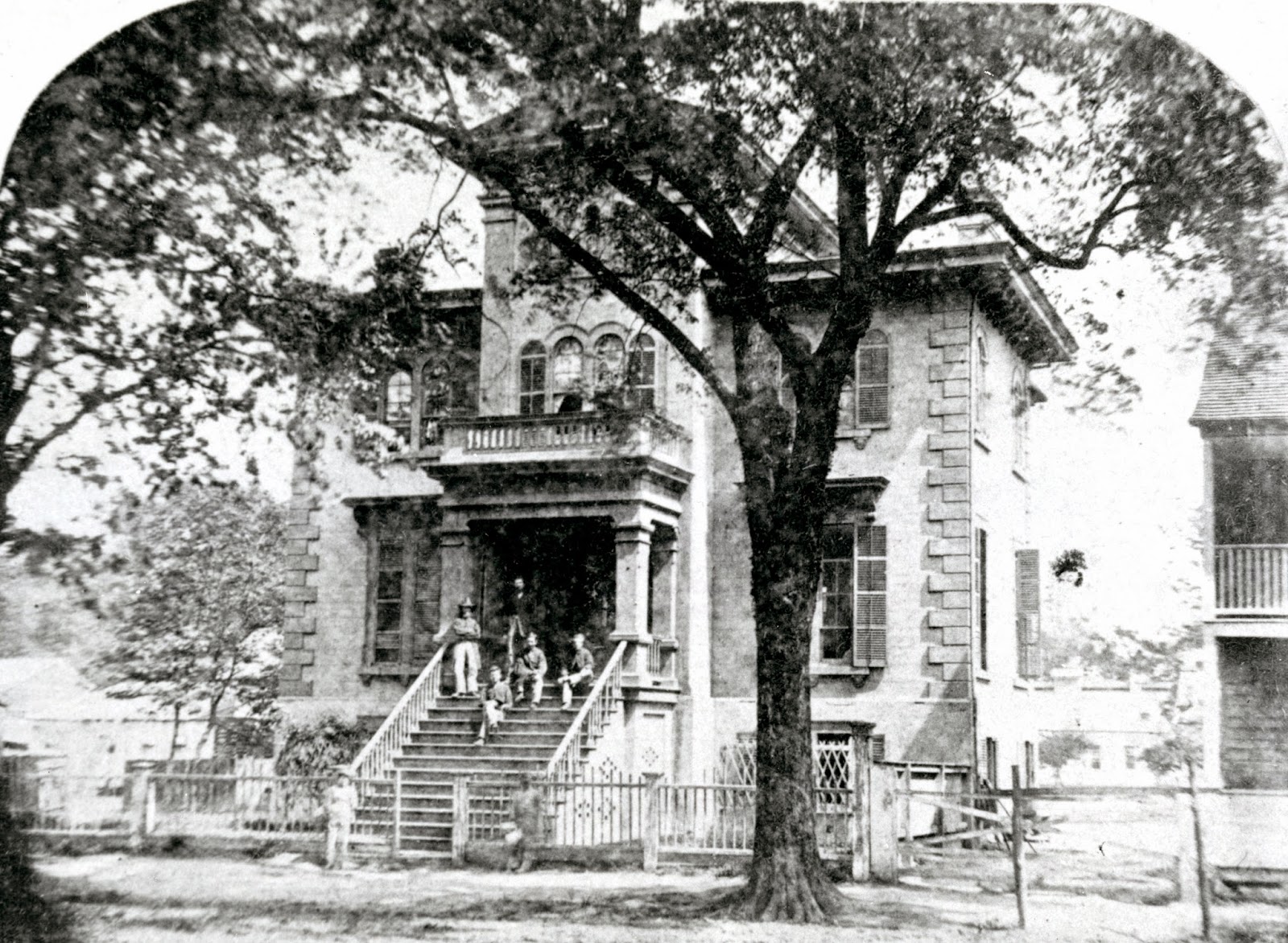Cooking for The Babe
By John B. Green III
 |
| Babe Ruth and Dave Sampson, c. 1930. |
He was born a slave yet he lived to become a valued companion of some of the greatest sports figures of the 20th century. His parents were sold away when he was only three weeks old yet he survived to marry and have a family of his own. His name was Dave Sampson and for more than thirty years he was perhaps the best known camp cook and hunting guide in eastern North Carolina.
 |
| Babe Ruth and Dave Sampson, c. 1930, probably at Camp Bryan. |
Dave's story, nearly forgotten today, is told in a number of articles which appeared in North Carolina newspapers of the late 1920's and early 1930's.
David Sampson was born in Craven County, North Carolina in 1853, the slave of Michael Fisher. Both his parents were sold and sent to Mississippi by Fisher when Dave was three weeks old. Raised in his master's house, Dave learned to wait on the ladies of the household and, following the Civil War, remained with the family to learn to cook and wait on tables. At the same time he developed into a prodigious hunter and fisherman. This combination of talents would make him much sought after as cook, guide, and companion in later years.
Sampson moved away from the area for a time but returned to marry Mary Jane Mitchell, his childhood sweetheart, in 1885. Together they had five children : Alfred, Annie, Rosa, Effie, and Eva May. Their first home was a 10 feet by 12 feet log cabin which Dave built himself. In time, Dave was able to accumulate enough money to acquire a large tract of land and build a frame house.
 |
| Dave Sampson Home, photo c. 1930. |
Although Dave Sampson farmed his land, it was his work as a cook and guide that provided a reliable income of wages, tips, and presents from his hungry and admiring fans. Dave was the regular cook at Camp Bryan, a sizable hunting preserve in the Lakes Poccosin area of Craven County. Serving faithfully for thirty years, he became known as "the cook that never failed." It was during these years that he cooked for a number of national figures who invariably sang his praises. Many were baseball heroes such as Babe Ruth and Christy Mathewson, while others were writers such a Irving S. Cobb and Rex Beach. Bud Fisher, creator of the Mutt and Jeff cartoons, and H.H. Brimley, curator of the North Carolina Museum of Natural History, were also numbered among Dave's friends.
 |
| "Keller's Banquet," Camp Bryan, Jan. 15, 1911. Dave Sampson seated at left. |
Dave preferred the title cook to that of chef and described himself as being not "much for style but strong for substance." He could cook almost anything but numbered among his specialties barbecue, cornbread, and lemonade.
 |
| Dave Sampson, Camp Bryan, January 15, 1911. |
His cooking was popular with men, especially men with hearty appetites. Of Babe Ruth he would say, "No wonder he weighs so much. He shore kept me busy cooking. I just couldn't cook him enough collards and cornbread."
 |
| Dave Sampson, cook, and Ben, caretaker, Camp Bryan, January 15, 1911. |
 |
| "Gator Hunters," Dave Sampson and H.H. Brimley, photo c. 1910. |
Dave Sampson usually enjoyed good health and claimed never to have called a doctor, but his health began to fail in 1931 (it would prove to be cancer.) He was unable to work at Camp Bryan that fall and winter. When Babe Ruth and Frank Stevens arrived for their annual visit in December of that year, they sorely missed his presence about the camp. They placed him on their payroll for the season and carried Dave to Camp Bryan just to enjoy his company.
 |
| Morning New Bernian, Tuesday, 26 Jan 1932. |
Dave Sampson died on the morning of January 25, 1932, aged 78 years. He was buried the next day in his family plot at Mt. Olive A.M.E Zion Church in Riverdale, Craven County.
 |
| Dave Sampson with the tools of his trade, photo c. 1930. |
Dave always attributed his good health to his outdoor life and his habit of not worrying. He expressed the essence of his philosophy thus:
What's the use of worrying? If I've got what I want, it's all right. If I ain't got it, it wouldn't do any good to worry. I've always trusted in the Lord. He will always provide for his children.









































